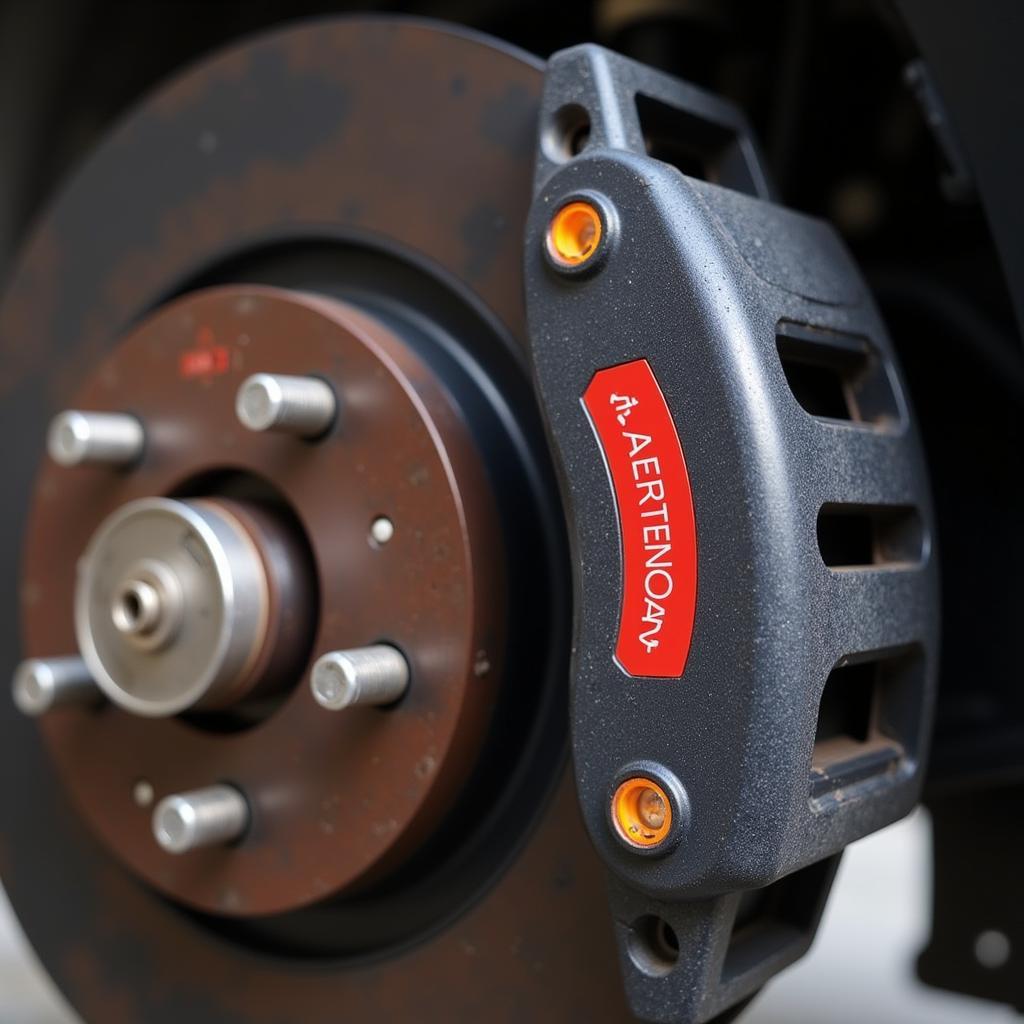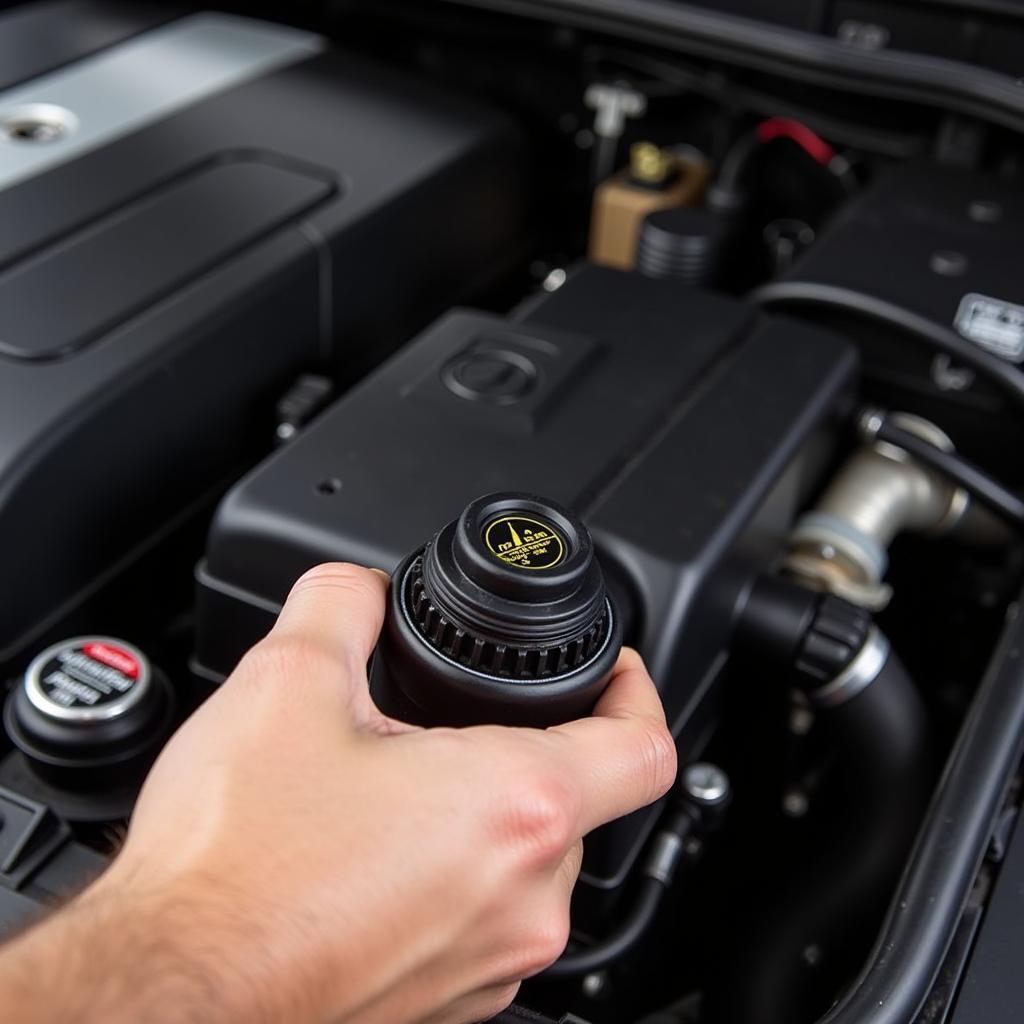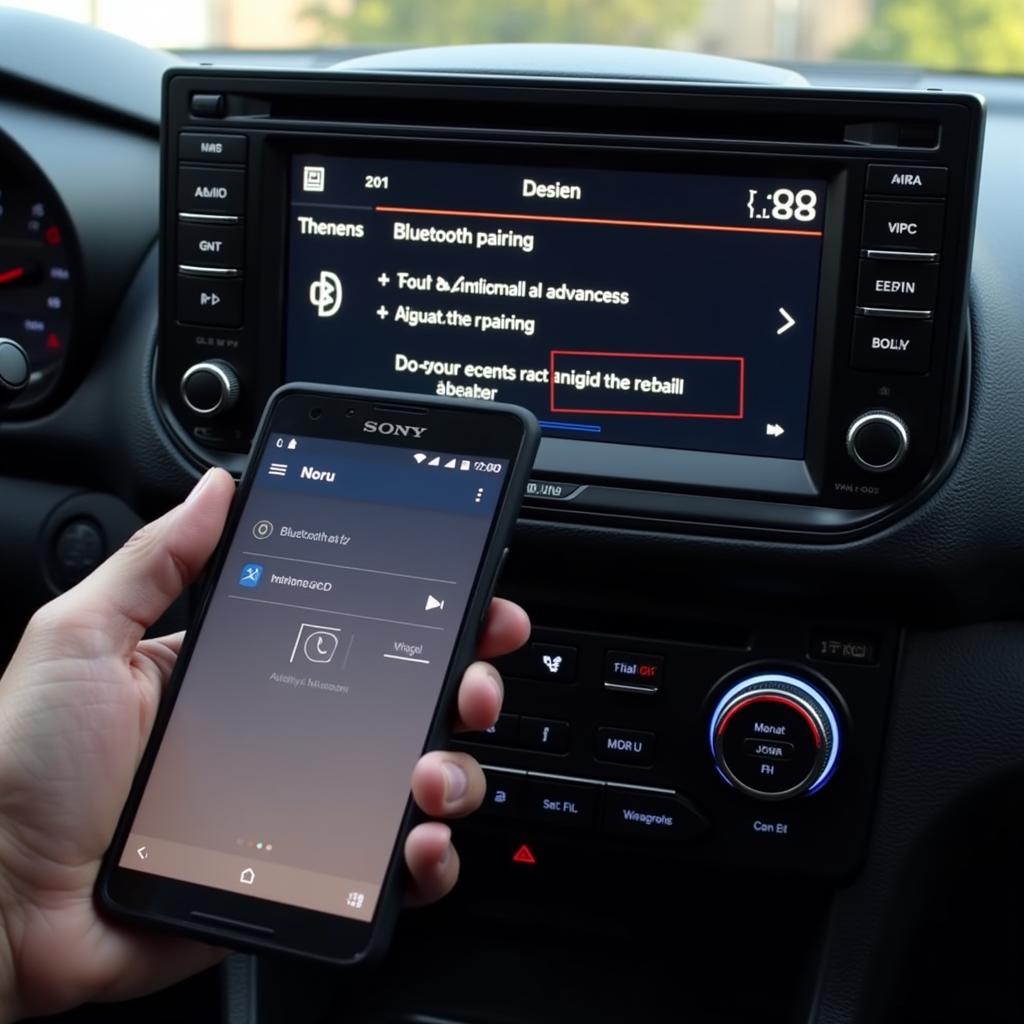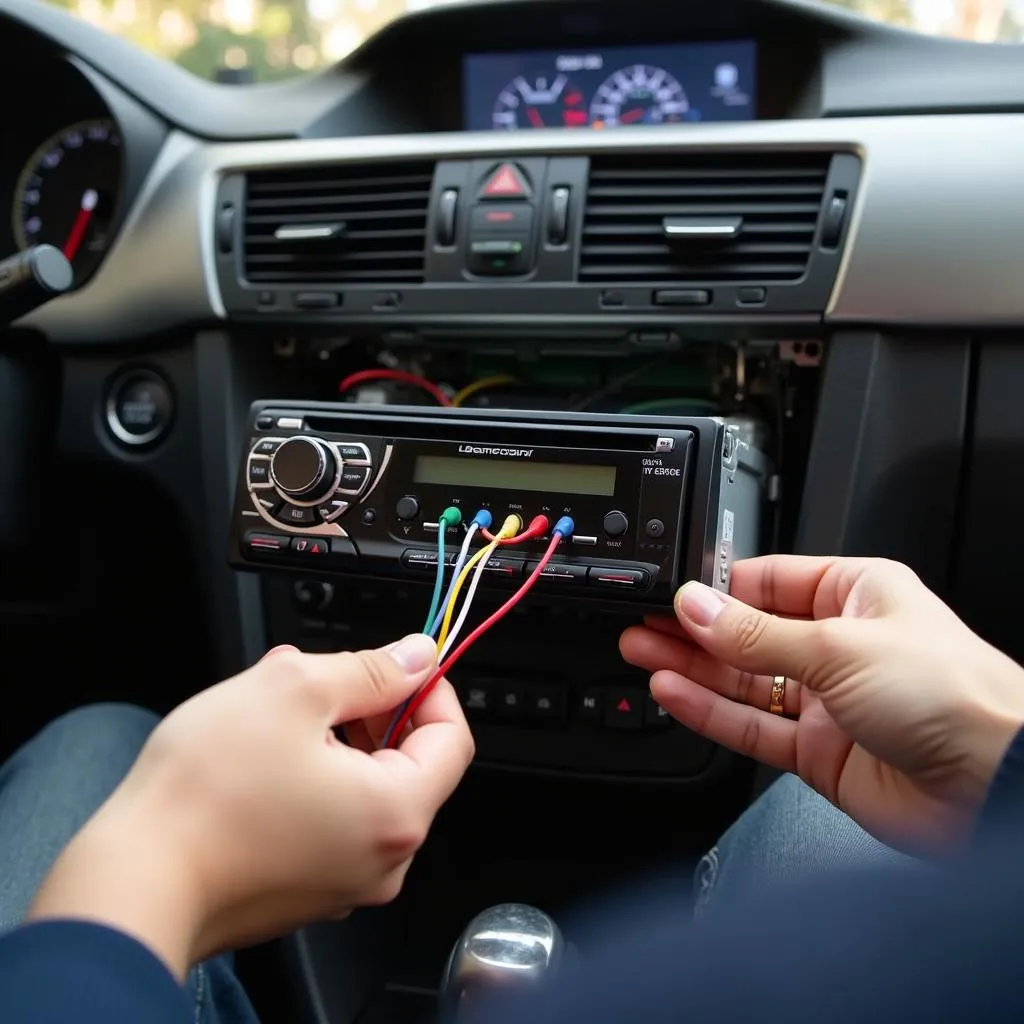The dreaded “brake wear” warning light flashing on your dashboard can be a heart-stopping moment for any Mercedes Benz owner. While it can be unnerving, understanding what triggers this warning and how to address it can save you from costly repairs and ensure your safety on the road. This comprehensive guide will delve into the common causes of the Mercedes Benz brake wear warning light, provide practical solutions, and equip you with the knowledge to tackle this issue confidently.
Deciphering the Brake Wear Warning Light
Your Mercedes Benz is equipped with a sophisticated system of sensors designed to monitor crucial components, including your brakes. The brake wear warning light, typically appearing as a circle with dashed lines surrounding a parenthesis (()), is a key element of this system. When illuminated, it signals that a component within your brake system requires attention.
Common Culprits Behind the Warning Light
While the appearance of the brake wear warning light doesn’t always signal a dire situation, it should never be ignored. Here are the most frequent reasons behind its activation:
-
Worn Brake Pads: The most common culprit is simply worn-down brake pads. As you apply your brakes, the friction material on the pads wears down over time. Mercedes Benz equips its vehicles with brake pad wear sensors that trigger the warning light when the pads reach a predetermined thickness, indicating the need for replacement.
-
Faulty Brake Pad Wear Sensor: Sometimes, the issue might not be the brake pads themselves but the sensor responsible for monitoring their wear. A malfunctioning sensor can send a false signal, triggering the warning light prematurely.
-
Low Brake Fluid Level: Brake fluid is the lifeblood of your braking system, responsible for transmitting the force applied to the brake pedal to the wheels. A low brake fluid level, often caused by a leak or severely worn brake pads, can significantly compromise braking performance and activate the warning light.
-
Issues with the Brake Hydraulic System: Problems within the brake hydraulic system, such as a faulty master cylinder or ABS module, can also lead to a brake wear warning light. These issues are more complex and typically require professional diagnosis and repair.
 Mercedes Benz Brake Pad Wear Sensor
Mercedes Benz Brake Pad Wear Sensor
Troubleshooting the Brake Wear Warning Light: A Step-by-Step Guide
Before rushing to the mechanic, there are a few troubleshooting steps you can perform yourself:
-
Check Your Brake Pad Thickness: Begin by visually inspecting your brake pads. If you notice the friction material is significantly thin or you can see the wear indicator touching the rotor, it’s time for a replacement.
-
Inspect for Brake Fluid Leaks: Carefully examine the area around your vehicle’s wheels and under the hood for any signs of brake fluid leaks. Look for puddles of fluid or wet spots that might indicate a leak.
-
Check the Brake Fluid Level: Locate the brake fluid reservoir under the hood (refer to your owner’s manual for its exact location) and check the fluid level. If it’s below the “minimum” mark, add the appropriate brake fluid type as recommended by Mercedes Benz.
 Checking Brake Fluid Level in a Mercedes Benz
Checking Brake Fluid Level in a Mercedes Benz
When Professional Help is Necessary
If you’ve checked the basics and the brake wear warning light persists, it’s crucial to seek professional help. A qualified Mercedes Benz technician has the expertise and specialized equipment to diagnose and repair more complex brake system issues.
“Ignoring a persistent brake wear warning light can lead to further damage and compromise your safety,” cautions Jake Peterson, a seasoned Mercedes Benz technician with over 15 years of experience. “It’s essential to address the issue promptly to ensure optimal braking performance.”
Preventative Measures for a Healthy Braking System
Proactive maintenance is key to preventing premature brake wear and potential issues. Here are some preventative measures to keep your Mercedes Benz braking system in top condition:
-
Regular Brake Inspections: Schedule routine brake inspections, ideally every 10,000 miles or as recommended by your Mercedes Benz service schedule.
-
Timely Brake Pad Replacement: Don’t wait for the wear indicator to activate. Replace your brake pads as soon as they approach the minimum thickness specified by Mercedes Benz.
-
Quality Brake Pads: Opt for high-quality brake pads from reputable brands. While they may cost slightly more, they offer superior performance, longevity, and reduced noise.
-
Mindful Driving Habits: Aggressive driving habits, such as hard braking and rapid acceleration, can accelerate brake wear. Practice smooth driving techniques to extend the life of your brake pads.
 Mercedes Benz Brake Service
Mercedes Benz Brake Service
Addressing Specific Mercedes Benz Models
While the general principles of the brake wear warning light apply across Mercedes Benz models, certain years and models may exhibit specific issues. Here are some resources for specific models:
- For a comprehensive guide on the 2007 CLS550 brake warning, refer to our detailed article: 2007 cls550 brake warning.
- Need help resetting the brake pad warning light on your Mercedes Sprinter? We have you covered: mercedes sprinter brake pad warning light reset.
- Experiencing issues with the brake warning light on your 2003 Mercedes E320? This resource can help: 2003 mercedes e320 brake warning light.
Your Mercedes Benz: A Legacy of Performance and Safety
Mercedes Benz has built a legacy of producing vehicles renowned for their performance, luxury, and safety. By understanding and proactively addressing the brake wear warning light, you’re not only ensuring optimal performance but also upholding the safety standards that define the Mercedes Benz brand. Remember, timely maintenance and expert care are essential to keep your Mercedes Benz performing at its best for years to come.



